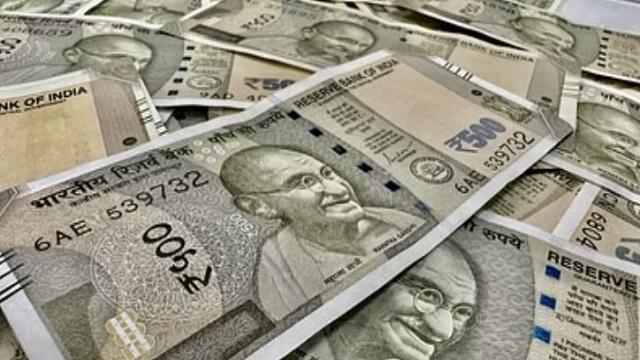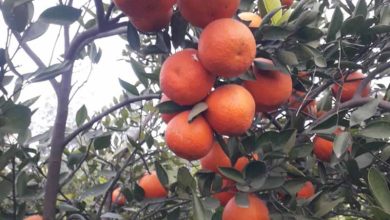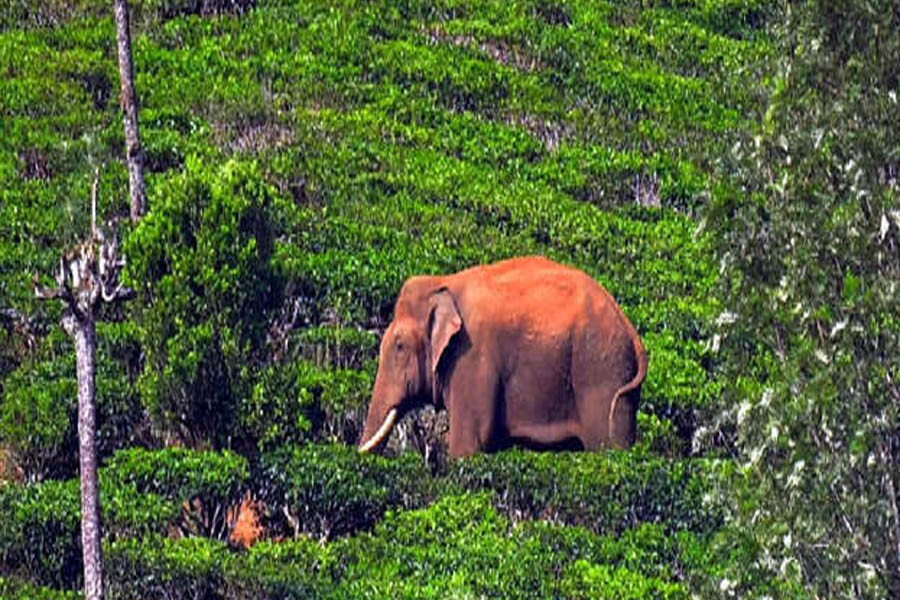Odisha Economic Survey 2023-24 projects 8.5 per cent economic growth, check details

Bhubaneswar: The Planning & Convergence Department of the State government has released the Odisha Economic Survey 2023-24 projecting an economic growth of 8.5 per cent.
Odisha economy is estimated to grow at 8.5 per cent in 2023-24 as per advance estimate in comparison to 7.9 per cent growth in 2022-23, said the report adding that the growth, however, was concentrated in the industry sector and services sector.
The report also said that the per capita income of Odisha is Rs 1,61,437 in 2023-24 (AE), which is 12.4 per cent less than India’s per capita income of Rs 1,84,205.
While Odisha’s per-capita income since 2015-16 has grown at a CAGR of 12.1 per cent, still Odisha ranks 11th among 17 major States. The State is committed to expedite its growth and developmental effort to increase the per capita income and contribute to ‘Viksit Bharat’ goal of the country.
According to NITI Aayog, the multidimensional poverty headcount ratio in the State has declined from 29.3 per cent in 2015-16 to 15.7 per cent in 2019-21. More than 62 lakh people escaped multidimensional poverty in the State between 2015-16 and 2019-21. However, Odisha ranks 6th among the major 17 States with high incidence of poverty headcount.
The agriculture and allied sectors are estimated to grow by 3.5 percent in 2023-24 which contributed 20.4 percent to the Gross State Value Added (GSVA). The state needs to take measures towards crop diversification to enhance productivity and farmer’s income.
The industry sector in Odisha is expected to grow at 8.7 per cent in 2023-24 as per advance estimate contributing 43.2 per cent to the Gross State Value Added (GSVA). However, Industrial activities in Odisha is concentrated mainly in basic metal and mineral based industries. It needs to put more concerted effort to diversify from mineral based industries to other value-added industries.
Services Sector:
The services sector is estimated to grow at 9.2 per cent in 2023-24 (AE) contributing around 36 per cent to State economy with an employment share of 26 per cent of total workforce.
While some IT companies have opened their domestic and global operations in Bhubaneswar, the State needs to encourage more IT and ITeS companies to open its operation in Odisha thereby increasing IT/Software exports from Odisha.
Odisha Tourism has immense potential. However, post pandemic the State is yet to recover in terms of tourist footfall. Therefore, the State needs to augment its investment in tourism infrastructure, making Odisha the top tourist destination state.
Labour Force Participation:
Labour Force Participation Rate (LFPR) and female LFPR is increasing in the State. LFPR (for age 15+) in Odisha has increased from 51.2 per cent in 2018-19 to 61.3 per cent in 2022-23.
Female labour force participation rate for age group 15 years and above in Odisha has increased from 24.4 per cent in 2018-19 to 44.7 per cent in 2022-23.
However, still majority of the employment is in the agriculture and construction sector. Creation of more quality employment with better wage structure is the focus of the State.
Capital Outlay:
The state allocated nearly INR 51,683 crore towards capital outlay in 2023-24 (BE), which is 6.2 per cent of GSDP.
However, given the infrastructural gap prevalent in the State, the level of Capex spending of the State is likely to increase in the ensuing years.
Fiscal Management:
Odisha has been able to keep its key fiscal indicators within the FRBM Limit. Odisha’s fiscal deficit to GSDP ratio declined from 3.5 per cent in 2019-20 to 3.1 per cent in 2023-24 BE.
The debt ratio stood at 12.9 per cent and 13.6 per cent in 2022-23 (RE) and 2023-24 (BE) respectively which is less than 25 per cent limit prescribed by Fifteenth Finance Commission and Odisha FRBM Act, 2005.
Food grains Production:
Food grains production in Odisha has reached 141.4 lakh MT in 2022-23 by growing 24.2 per cent from 113.8 lakh MT in 2021-22.
Odisha is the 5th largest rice producer in the country with 7 per cent share in total rice production in India as of 2021-22.
Yield of various crops in Odisha is lower than the national average. Rice yield in Odisha is 19 per cent lower than all India level while there is 61 per cent yield gap in case of pulses. There is a need to increase yield and improve efficiency to increase farmers income.
Promoting Millets:
Following the encouragement of Government of India, Odisha has been promoting millets cultivation and consumption under Odisha Millet Mission since 2017-18.
Millet production in Odisha has increased by 47.3 percent in 2022-23. Since implementation of Odisha Millet Mission, millet production in the state has increased by 121 per cent between 2017-18 and 2022-23.
Agricultural credit and irrigation infrastructure:
Agriculture credit disbursement has increased from INR 8520 crores in 2011-12 to INR 54717 crores in 2022- 23.
There is an increase in irrigation potential created (IPC) in Odisha from 50 lakh ha. to 69.2 lakh ha. between 2013-14 to 2022-23.
Livestock:
Odisha has witnessed growth in livestock and fisheries production, contributing to both food security and economic development. Meat production in the state has increased to 226.9 thousand MT in 2022-23 against 216.2 thousand metric tons in 2021-22.
Milk Production in Odisha has increased to 24.8 lakh metric tonnes (LMT) in 2022-23 from 24.0 LMT in 2021- 22.
However, Per capita availability of milk and eggs in State is lower than all India average. There is a need to focus on increasing milk production through increasing yield and promotion of organized milk sector. Further, commercial poultry sector needs to be focused to increase egg production and availability of eggs in the State.
Fisheries:
Fish production has reached 10.5 lakh tones in 2022-23 by growing at a CAGR of 11 per cent from 4.4 lakh tones in 2014-15. The per-capita annual consumption of fish in the state increased from 11.06 kg in 2014-15 to 17.73 kg in 2022-23.
Total exports of fish to foreign countries and other states have increased at a CAGR of 11.2 per cent from 115.6 thousand MT in 2014-15 to 270.6 in 2022-23.
However, in comparison to other states, Odisha has immense potential to increase fish production so that it can be the leading Fish exporting State in the country.
Mineral Producing State:
As per Indian Bureau of Mines, the State contributed 41.9 per cent of total mineral production (excluding fuel oil and atomic minerals) in the country during 2022-23.
Odisha’s Mineral revenue has reached to INR 38,075 crore in 2022-23 providing the state adequate cushion for developmental spending.
Industrial Diversification:
There exist a continued thrust and opportunity in diversification of manufacturing industries. List of Approved Sectors for investment in Odisha increased from 13 in 2015-16 to 32 in 2023-24, which covers new age investment areas in the likes of Aerospace and aircrafts, Green Energy and equipment, Specialty Chemicals, ESDM, Green Hydrogen and derivatives, data centres, technical textiles etc.
The present pattern of industrialisation has a high capital intensity ratio resulting in lower employment.
Financial Services:
Services sector accounted for 26 per cent of Odisha’s total workforce in 2022-23, being the second largest employer after agriculture and allied sector (48 per cent).
In Odisha, financial services account for 2.9 per cent of the state’s GSVA in 2023-24 (AE) which is one of the lowest amongst the major States. There are 4,373 number of Gram Panchayat without a single brick and mortar branch as per SLBC report (March 2023).
Road and Rail Network:
With the increased expenditure and support from Govt. of India, Odisha has 5th largest road network in the country.
There is a need to increase the road connectivity to the inaccessible areas in the State as well as to build better quality road in the State.
By the end of 2022-23, the State had 2,992 Km of railway route, out of which 2940 Km (98.3 per cent) have been electrified.
Civil Aviation:
The civil aviation sector in Odisha has witnessed a growth and development. The State connects to 19 cities in India through direct flights and 3 international destinations (Bangkok, Singapore, and Dubai).
However, air passenger traffic per million population is low at 86 thousand against all India level of 240 thousand.
Life Expectancy:
Life Expectancy Rate of Odisha increased by 9.9 years from 60.4 in 2000-04 to 70.3 in 2016-20 as per data from Sample Registration System (SRS).
However, there are Seven States, out of 17 major States, where the life expectancy is more than Odisha. There is a need to improve the quality of life and longevity of the people in the State.
Education:
Gross Enrolment Ratio (GER) in Odisha at upper primary, secondary, and higher secondary levels is 91.3, 80.4 and 43.6, respectively. However, GER at primary and upper primary levels in Odisha is still lower than the all-India average.
The retention rate in Odisha has improved at the primary, elementary, and secondary levels between 2017-18 and 2021-22. However, despite a 22.2% reduction in dropouts at the secondary level between 2014-15 and 2021-22, Odisha still has the highest secondary level dropout rate in India at 27.29 per cent.
ST and SC Development:
Odisha has a wide network of 1,737 residential schools and 5,500 hostels benefitting 4.5 lakh ST and SC students including 2.75 lakh girl students across primary, secondary, and senior secondary levels of education.
Sports:
With the aim of diversifying sports infrastructure development, state-wide integrated sports complexes have been constructed in Puri, Berhampur, Keonjhar, Jeypore, Rourkela, and Sundargarh while Jharsuguda and Jajpur are under construction.
There is a need to invest more and create more sports facilities across the State which will help in creating more champion athletes in the State.
Women literacy and Health:
Odisha has shown a progress in female literacy, with the literacy rate for women aged 7 has increased from 50.5 per cent in 2001 (Census) to 73.6 per cent in 2022-23 (PLFS), though it is still below all India level female literacy rate at 80.3 per cent. The GER of girls is currently better than their male counterparts at upper primary, secondary, and higher secondary levels as per the UDISE report (2021-22).
Odisha has 92.2 per cent institutional birth in comparison with 88.6 per cent at All-India level. On the other hand, Maternal Mortality Ratio is 119 per lakh live births in 2018-20 in comparison with 97 per lakh live births at AllIndia level.
Rural Connectivity:
More than 80 per cent of population reside in rural in Odisha. Rural roads have gone up from 22,795 km in 2011-12 to 99,446 km in 2023-24.
















